to gather : The Architecture of Relationships opens to public
Singapore Pavilion at the 17th International Architecture Exhibition — La Biennale di Venezia
May 20, 2021

21 May 2021, Singapore — The Singapore Pavilion officially opens with its seventh showcase at the 17th International Architecture Exhibition, La Biennale di Venezia. Commissioned by the Urban Redevelopment Authority (URA) and DesignSingapore Council (Dsg) and curated by the National University of Singapore (NUS), the exhibition returns to the Sale d’Armi at the Arsenale in Venice, Italy, and will run from 22 May to 21 November 2021. Entitled to gather: The Architecture of Relationships, the exhibition responds to Biennale curator Hashim Sarkis’ overarching theme and question — ‘How Will We Live Together?”.
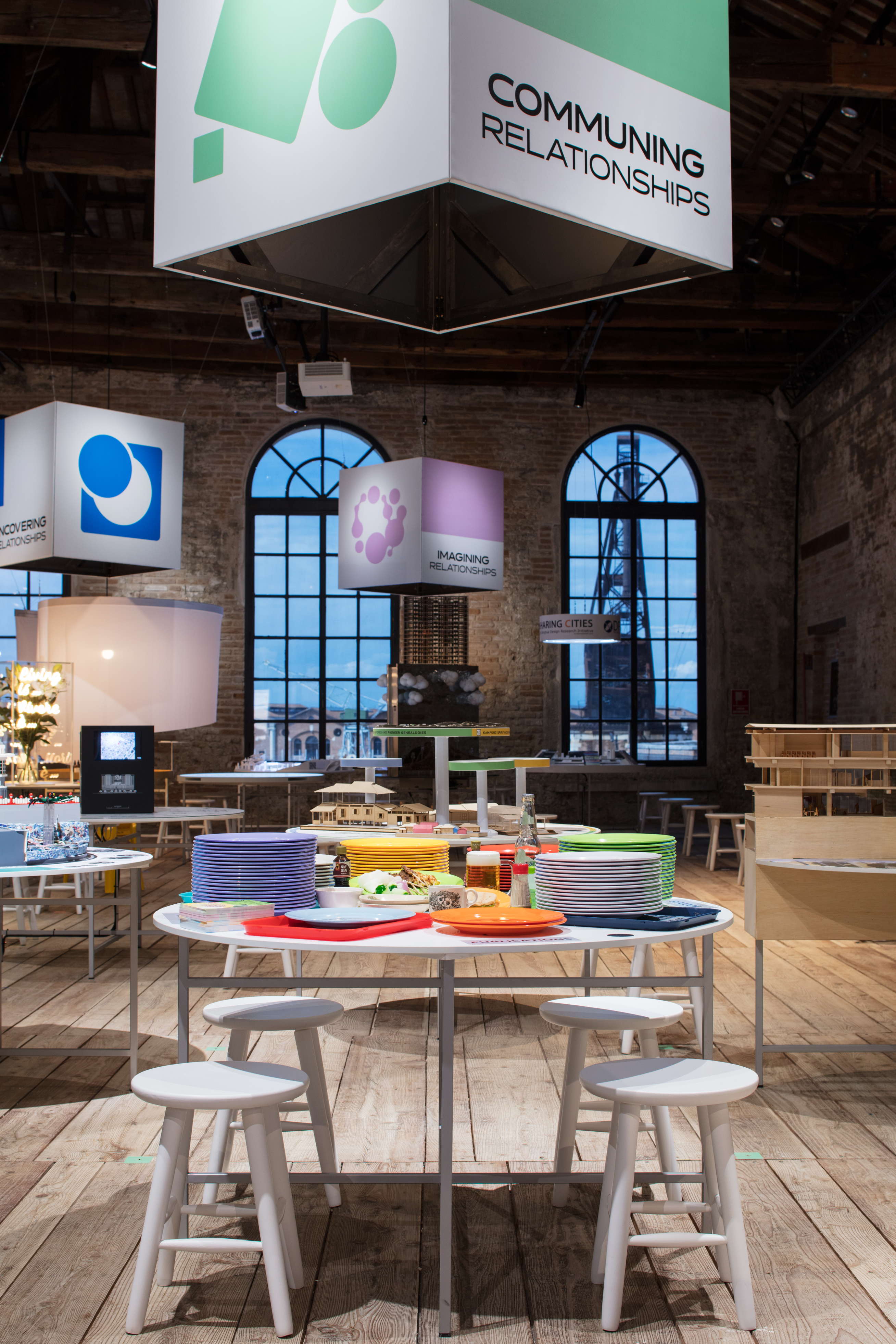
The Singapore Pavilion was officially inaugurated on Friday, 21 May 2021 by Mr Desmond Lee, Singapore’s Minister for National Development, at a virtual launch event.
“Indeed, now more than ever, we must pay close attention to the interplay between human spaces and human connections. We must rise above the challenges and strengthen our social fabric,” said Mr Lee. “By creatively re-examining our built environment, we can continue to design new places and spaces that strengthen our societal fabric. This will help us emerge stronger from this pandemic. Together with the Biennale, we stand in solidarity with the global architectural fraternity to encourage architects locally and globally to strive for more inspirational designs that reflect an architecture of relationships.”
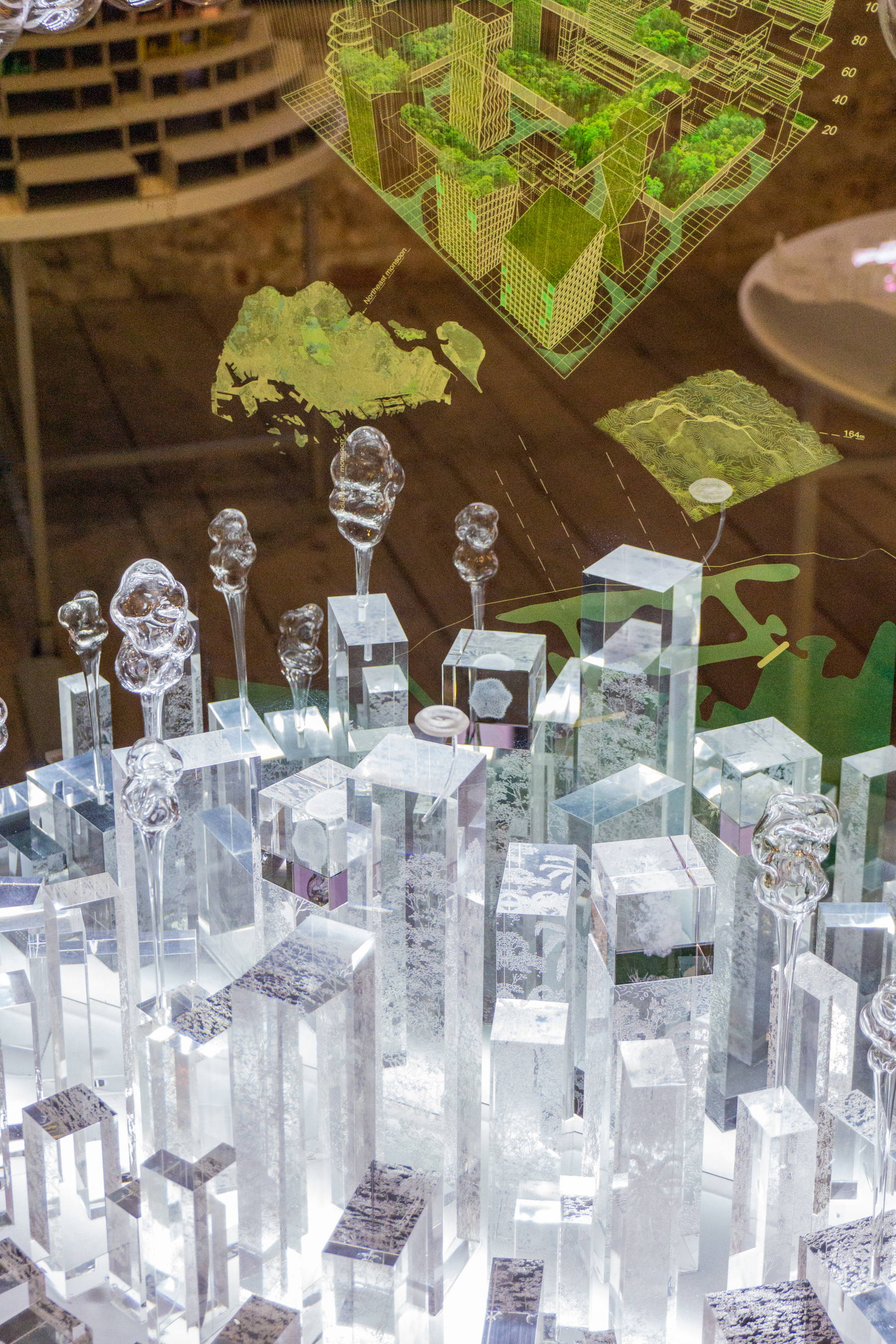
Pulling together everyday stories from Singapore’s urban fabric, to gather explores unique local spatial typologies that have emerged from Singapore’s dense urban population, and established distinctively Singaporean modes of gathering and living. Communal spaces like void decks(1), hawker centres(2) and community hubs describe the different scales in which design has meaningfully contributed to public social life.
In this year’s edition, 16 built and speculative architecture, art and design projects by local architects and creatives are presented on round tables reminiscent of the spatial configuration of hawker centres. At each table, visitors can explore how each of these projects encourage the forming of relationships, improve the quality of the built environment and forge new spatial contracts in the city.
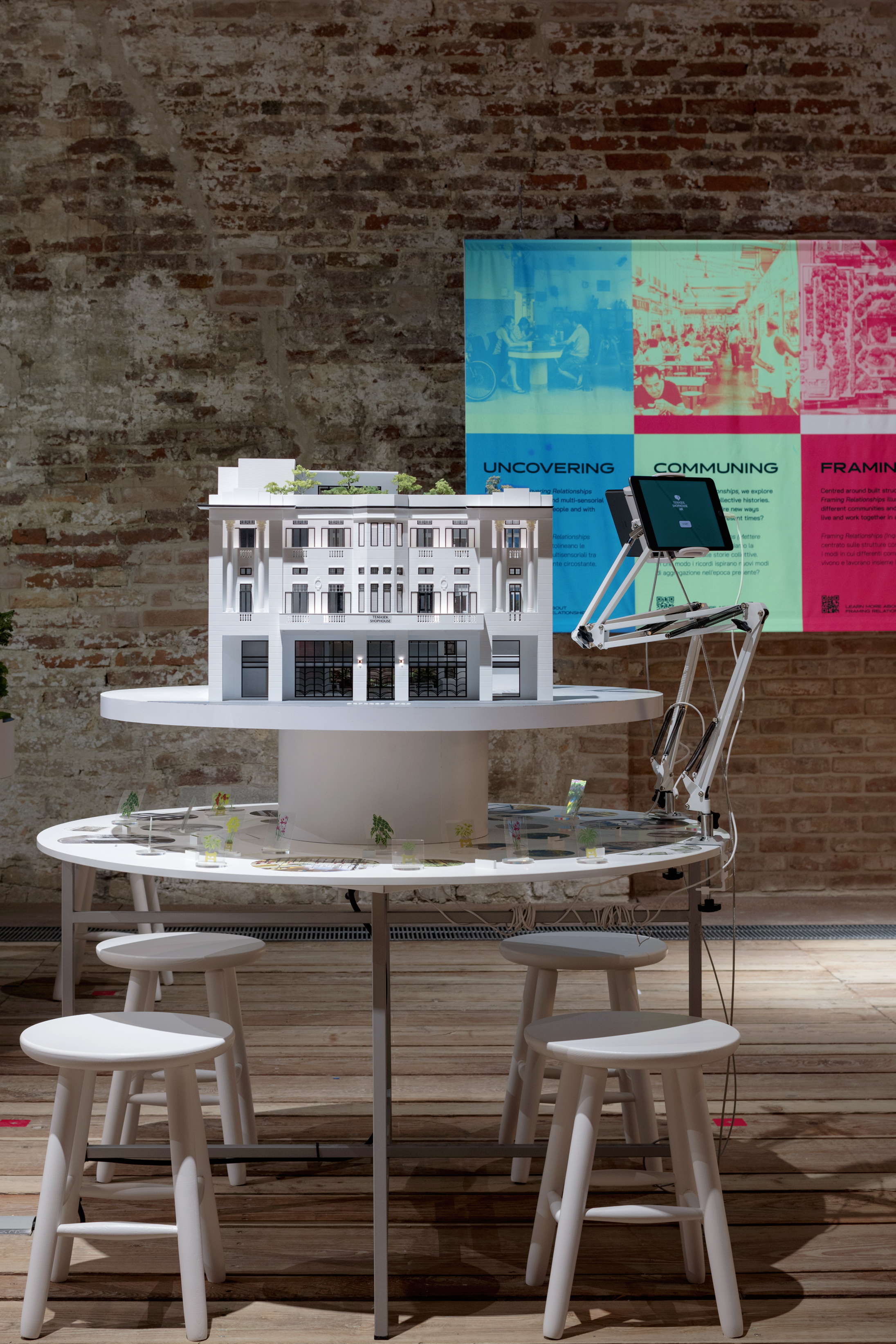
The four Pavilion subthemes, each with four corresponding projects, help to further expand these ideas. Communing Relationships examines how collective histories and memories can be preserved whilst inspiring new modes of coming together. Centred around the built structures, Framing Relationships explores how different communities and individuals work and live within a single space. Uncovering Relationships emphasises multi-sensorial interactions amongst people and our surroundings. Last but not least, Imagining Relationships speculates a future based on our conjoined relationship with digital technology.
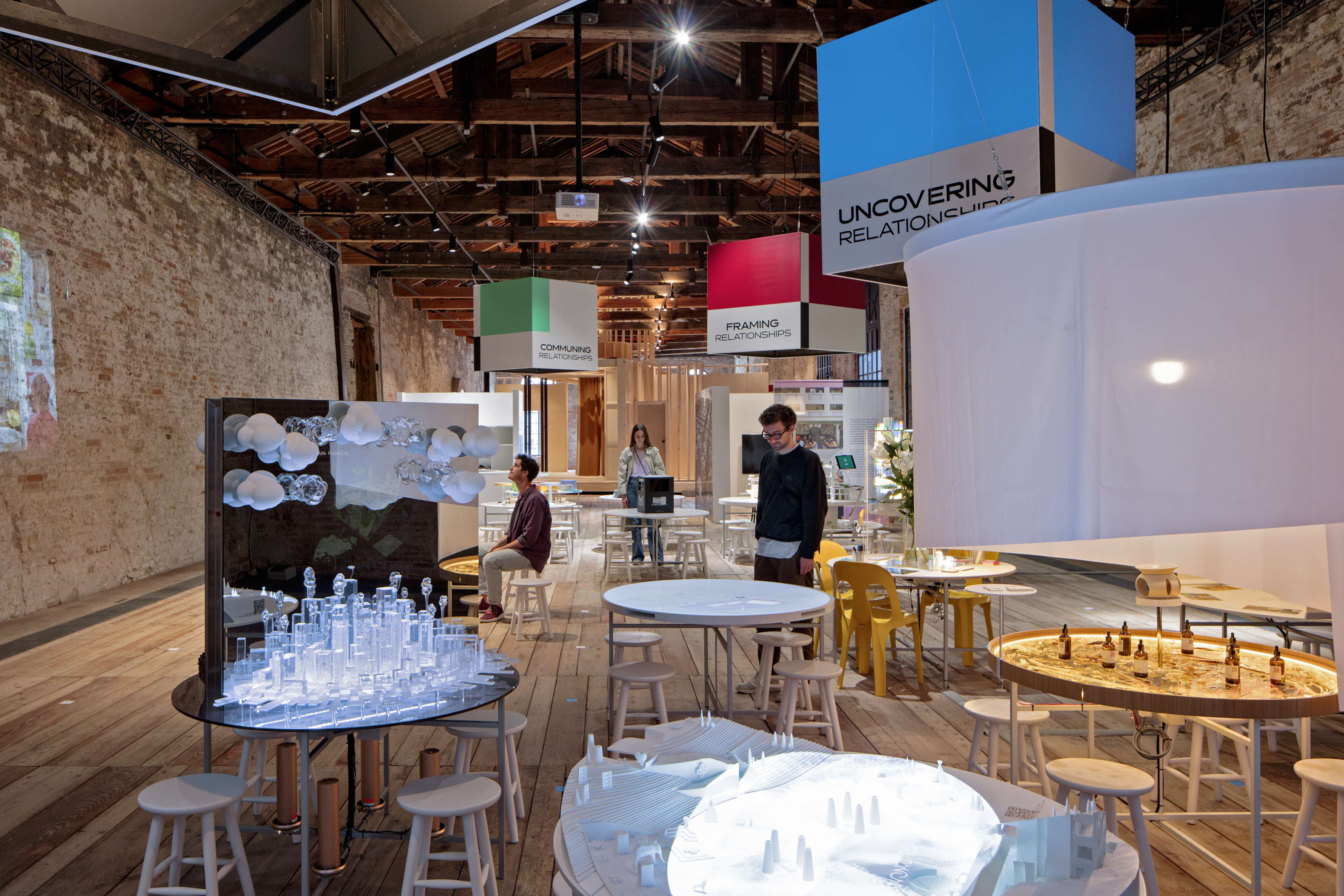
With the ongoing COVID-19 pandemic, there have been changes in the ways individuals and communities interact with one another and their surrounding built environments. Over the past year, Singapore and her residents have proven resilient and adaptable in responding to the shifting spatial arrangements. Local architects, designers and creatives have also taken this opportunity to critically reflect on how good design plays an important role in establishing safe, healthy and inclusive spaces.
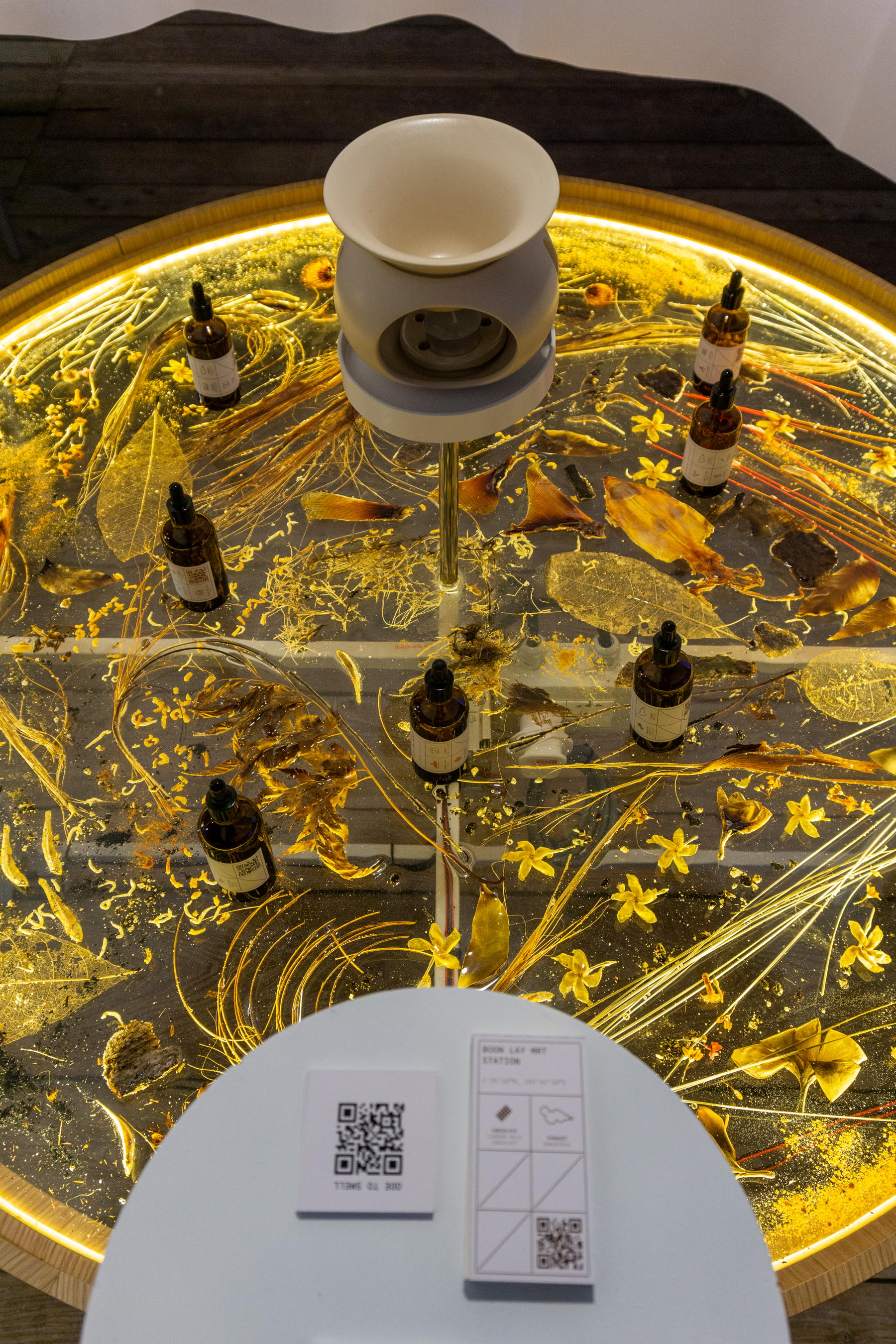
In addition to the physical staging of the Singapore Pavilion in Venice, the 16 projects will also be showcased via the Pavilion’s website and social media channels. Both international and local audiences are invited to view the curated content and participate in upcoming programmes. The Singapore Pavilion is also expected to be restaged locally in 2022, with more details to be announced in due course.
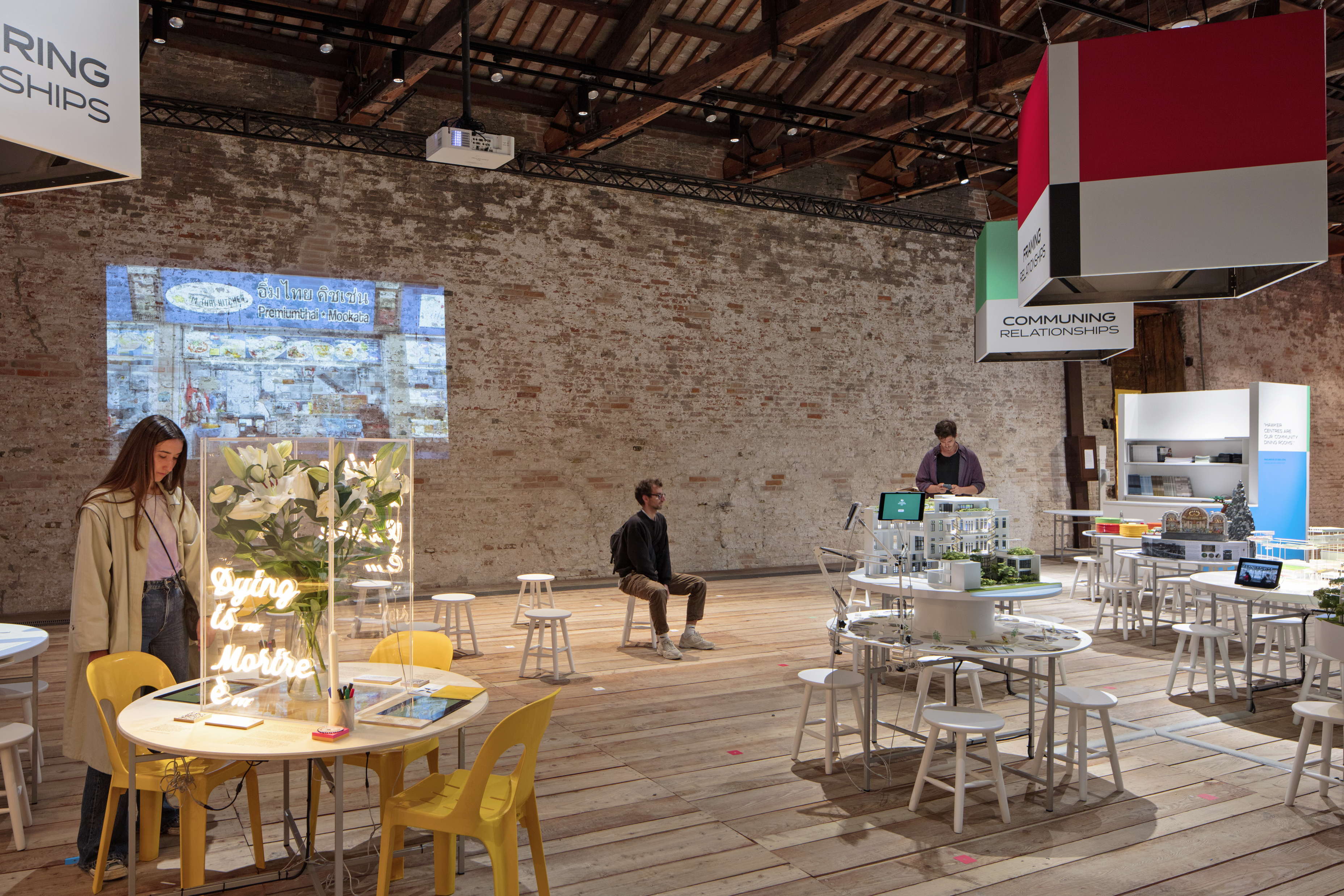
For more information, visit www.to-gather.sg, or the Singapore Pavilion’s Instagram and Facebook pages at https://www.instagram.com/to.gather.2021/ and www.facebook.com/to.gather.2021/
Additional Downloads
Annex A: About the Singapore Pavilion at the 17th International Architecture Exhibition of La Biennale di Venezia
Annex A: About the Singapore Pavilion at the 17th International Architecture Exhibition of La Biennale di Venezia
PDF - 137 Kb
Annex B: Curatorial Statement
Annex B: Curatorial Statement
PDF - 126 Kb
Annex C: About the Curators
Annex C: About the Curators
PDF - 111 Kb
Annex D: About the Projects
Annex D: About the Projects
PDF - 732 Kb
Annex E: Minister Desmond Lee's Opening Remarks
Annex E: Minister Desmond Lee's Opening Remarks
PDF - 141 Kb
- End -
(1) In Singapore, void decks are sheltered, open spaces at the ground floor of high-rise public apartment blocks.
(2) Hawker centres are public open-air, cooked food centres in Singapore that offer a variety of different cuisines. In 2020, Hawker culture in Singapore was added to the UNESCO Representative List of the Intangible Culture and Heritage of Humanity.
About the Urban Redevelopment Authority Singapore (URA)
The Urban Redevelopment Authority (URA) is Singapore’s land use planning and conservation agency. Our mission is “to make Singapore a great city to live, work and play”. We strive to create an endearing home and a vibrant city through long-term planning and innovation, in partnership with the community.
We have successfully transformed Singapore into one of the most liveable cities in Asia through judicious land use planning and good urban design. Adopting a long-term and comprehensive planning approach, we formulate strategic plans such as the Concept Plan and the Master Plan to guide the physical development of Singapore in a sustainable manner. Developed to support economic growth, our plans and policies are focused on achieving a quality living environment for Singapore.
We take on a multi-faceted role to turn plans and visions into reality. As the main government land sales agent, we attract and channel private capital investments to develop sites that support planning, economic and social objectives. Through our regulatory function, we ensure that development works are aligned with our plans. As the conservation authority, we have an internationally recognised conservation programme, and have successfully conserved not just single buildings, but entire districts. We also partner the community to enliven our public spaces to create a car-lite, people-friendly and liveable city for all to enjoy.
In shaping a distinctive city, we promote architecture and urban design excellence, and innovate to build a resilient city of opportunity that fulfils the aspirations of our people.
Visit www.ura.gov.sg for more information.
About the DesignSingapore Council (Dsg)
DesignSingapore Council’s (Dsg) vision is for Singapore to be an innovation-driven economy and a loveable city through design by 2025. As the national agency that promotes design, our mission is to develop the design sector, help Singapore use design for innovation and growth, and make life better in this UNESCO Creative City of Design. Our work focuses on three areas. First, we help organisations and enterprises use design as a strategy for business growth; and for excellent delivery of public services. Second, we nurture industry-ready talents skilled in design and innovation; and engender a design-minded workforce for the future economy. Third, we advance the Singapore brand through raising design appreciation on home-ground; helping local design talents and firms go international, and making emotional connections with people across the world. The Dsg is a subsidiary of the Singapore Economic Development Board.
Singapore was designated UNESCO Creative City of Design in December 2015. The designation supports Singapore’s development of a creative culture and eco-system that integrates design and creativity with everyday life. It also expands Singapore’s opportunity to collaborate with cities from the UNESCO Creative Cities Network (UCCN). The City of Design Office is sited with Dsg which coordinates and implements programmes that respond to UCCN’s mission.
Visit www.designsingapore.org for more information.
About the National University of Singapore (NUS) and the Department of Architecture
A leading global university centred in Asia, the National University of Singapore (NUS) is Singapore’s flagship university, which offers a global approach to education and research, with a focus on Asian perspectives and expertise. NUS has 17 faculties and schools across three campuses. Over 38,000 students from 100 countries enrich the community with their diverse social and cultural perspectives. NUS also strives to create a supportive and innovative environment to promote creative enterprise within its community.
The Department of Architecture, which is part of the NUS School of Design and Environment, was established in 1958. Today, NUS Architecture offers a wide range of programmes, including landscape architecture, urban design, urban planning and integrated sustainable design. Building on the strength of its rich heritage and visionary leadership, NUS Architecture is poised to remain at the forefront of global excellence in architectural education and research, with a focus on high density Asian cities in the tropics.
For more information on NUS and NUS Architecture, please visit www.nus.edu.sg and sde.nus.edu.sg/arch/.